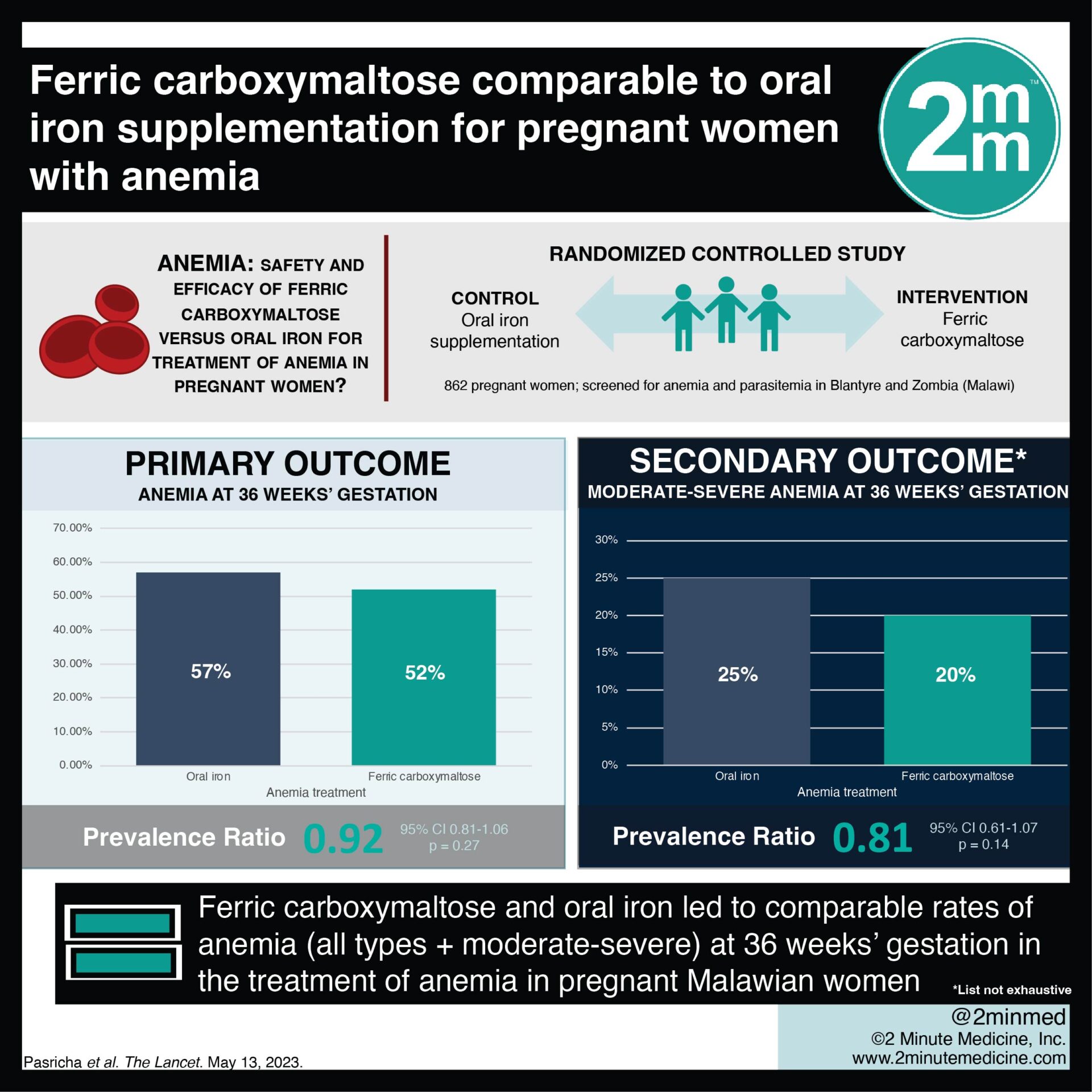
2. Adverse events between both groups were comparable; there were no changes in birth weight.
Evidence Rating Level: 1 (Excellent)
Study Rundown: Anemia affects more than one-third of all pregnancies in Africa. Although oral iron supplementation is recommended during pregnancy, patient adherence and uptake may be unsatisfactory. Ferric carboxymaltose is an intravenous iron formulation that can be administered in a single dose as an alternative, however, current evidence regarding its effectiveness is limited. This randomized controlled trial aimed to compare the safety and efficacy of ferric carboxymaltose with oral iron supplementation for the treatment of anemia among Malawian pregnant women. The primary outcome was anemia at 36 weeks gestation while key safety outcomes included infusion-related adverse events and all adverse events up to 4 weeks post-partum. According to study results, ferric carboxymaltose did not significantly reduce anemia prevalence or increase birthweight compared to standard-of-care. This study was strengthened by a large sample size of women who were followed for several months. However, the results may have limited generalizability as its enrollment only included patients from Malawi.
Click to read the study in The Lancet
In-depth [randomized-controlled trial]: Between Nov 12, 2018, and Mar 2, 2021, 21 258 patients were screened for eligibility across 2 regions in Malawi, Africa. Included were women with capillary hemoglobin < 10.0 g/dL and negative malaria diagnostic test. Altogether, 862 patients (430 in ferric carboxymaltose and 432 in standard care) were included in the intention-to-treat analysis. Although anemia prevalence at 36 weeks’ gestation was lower in the ferric carboxymaltose group (52%) compared to standard-of-care (57%), statistical significance was only achieved at 4 weeks (prevalence ratio [PR] 0.91, 95% confidence interval [CI] 0.85-0.97). Furthermore, birthweight was comparable between groups (mean difference -3.1g, p=0.93). Most adverse events were mild-to-moderate in nature and comparable between groups (43% in ferric carboxymaltose vs. 39% in standard-of-care, risk ratio 1.08, p=0.34). There were no infusion-related adverse events. Overall, findings from this study suggest that ferric carboxymaltose did not reduce anemia prevalence at 36 weeks’ gestation among anemic pregnant women in Africa.
©2023 2 Minute Medicine, Inc. All rights reserved. No works may be reproduced without expressed written consent from 2 Minute Medicine, Inc. Inquire about licensing here. No article should be construed as medical advice and is not intended as such by the authors or by 2 Minute Medicine, Inc.















